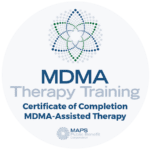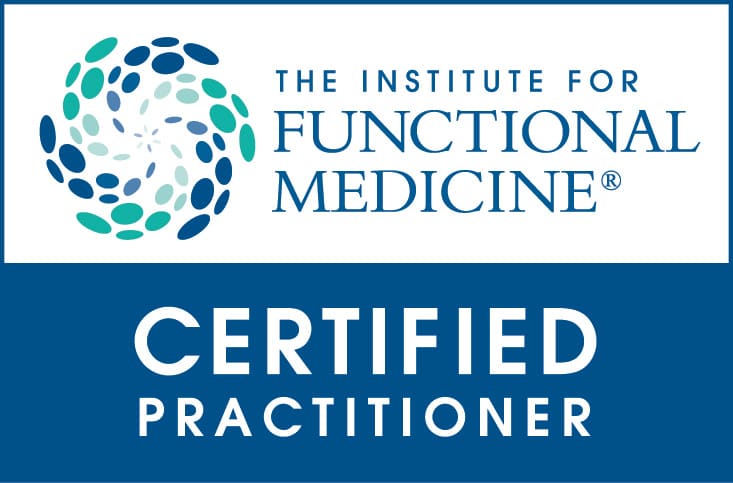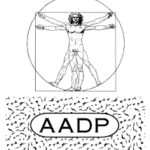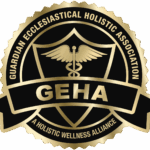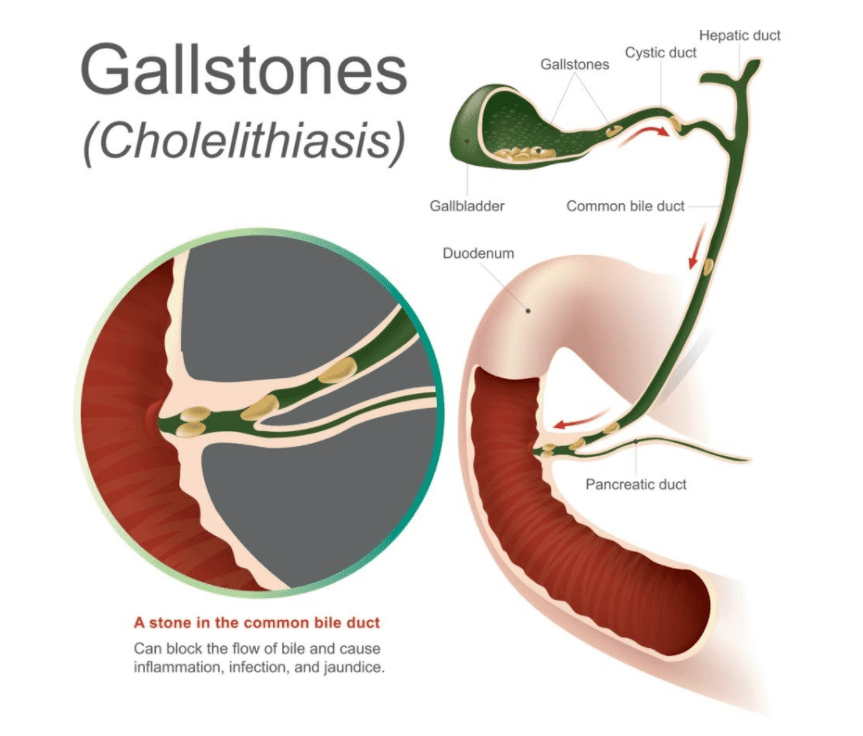
Gallstones are diagnosed in more than 25 million Americans and 75% of those are women. Many people don’t ever know they have gallstones, but those who do know will feel pain, usually in the right upper abdomen or sometimes radiating to the back and right shoulder. There may be accompanying nausea and vomiting. The pain occurs as the gall bladder contracts and the pain subsides as it relaxes. If a stone is lodged in a duct, it can cause inflammation of the gallbladder and a thickening of the wall called acute cholecystitis. It can also cause pancreatitis or cholangitis (inflammation of the bile ducts in the liver). This can sometimes be accompanied by a high fever, jaundice, and chills. This often requires intravenous antibiotics and surgical removal of the stone.
The severity of your gallstones is related to the severity of the inflammation and will determine if you can try some natural therapies before going to surgery to have your stone removed and your gallbladder out. I have found that if you ask a gastrointestinal surgeon if the gallbladder is necessary, they will often say no. This mystifies me. I have recently been helping my mother with her gallstones and would like to report my findings from the field.
Is your gallbladder necessary?
Well, yes it is in fact. Your gallbladder is a small, pear-shaped organ on the right side of your abdomen, just beneath your liver. The gallbladder holds a digestive fluid called bile that’s released into your small intestine. Not having a gallbladder puts more pressure on the rest of the digestive system to break your food, drinks, medications, and supplements down into usable and absorbable particles. The surgeon who saw my mother told her the liver would just “take over” the job of the gallbladder. She already struggles to keep her liver enzymes within range for a host of other reasons.
What are gallstones?
Gallstones are made from the bile or cholesterol that is made in the liver and carried to the gallbladder. The fat in the food you eat triggers the contraction of the gallbladder that releases bile into the intestine. The stored bile crystallizes into stones or there can be more cholesterol than the bile salts can dissolve and stones that can be as small as a grain of sand or as large as a golf ball are formed. Pigment stones that are made from bilirubin and calcium salts and are a product of the breakdown of red blood cells can also form in the presence of some types of anemia, liver disease, and infection of the bile ducts.
Why do women form gallstones more frequently than men do?
As usual, it’s all about hormones. Estrogen elevates cholesterol in the bile and progesterone slows the emptying of the gallbladder. Hormone replacement therapy with estrogen increases the risk in pill form, including the oral contraceptive pill.
The more fat that a body carries, the more estrogen it produces, so obesity increases the risk of gallstones. However, so does rapid weight loss from very low calorie diets because not eating interferes with bile production and can cause crystallization of cholesterol. Having diabetes will also increase the risk for gallstones and the almost certain way to suffer from gallstones is to have weight loss surgery.
How are gallstones treated?
In the conventional western model of medicine, a gallbladder is considered an unnecessary inconvenience. After the birth of my fourth child, still deeply enmeshed with the standard American model of medicine, I agreed and had my gallbladder removed. Over 30 years later I can say that I have to pay very close attention to my stomach acid levels, my liver detoxification, my small intestinal microbiome and my large intestine ecosystem and peristalsis. My tongue frequently has scallops around the edges, which indicates poor intestinal absorption. I work tirelessly to have half-moons at my fingernail cuticles, indicating I have enough stomach acid. I test yearly with a comprehensive stool test to make sure I am producing enough bile, stomach acid, the right microbial balance, and digestive enzymes. I take GB Boost three times a day and do a stomach acid challenge test every six months.
If you do not have a fever, unbearable pain, are not throwing up, and have had an ultrasound confirming your gallstones are not lodged in an area that can cause pancreatitis, you can try the same natural approaches to dissolving gallstones that I have been doing successfully with my mother. She no longer has pain. She’s scheduled for an MRI this week and we shall see if she’s able to avoid surgery. Here’s what I have been doing with her. (Please only do this if you are under medical supervision).
-
- A liver and gallbladder flush every week (see below) for three days. Those three days can cause weakness in the system because of the flush so I have her eat normally and take the same supplements for four days of the week between flushes to build her back up.
- Plenty of freshly juiced organic beets with their greens and freshly juiced organic apples every day.
- The following supplements:
- Chanca Piedra per label (a Peruvian herb known also as “stone breaker” and a host of similar names.
- Gold Coin Grass 1 scoop in water three times a day. This is a Chinese herb with properties that have been known to dissolve gallstones.
- AF Beta Food from Standard Process per label.
- Choline from Standard Process per label.
- Cholacol from Standard Process per label.
Plus, she’s keeping a castor oil pack with heat in place, having weekly massage and weekly chiropractic care, and taking 2 Epsom salts baths a day.
Liver, Gallbladder Flush Instructions
(only with medical supervision)
-
-
- From Monday morning until noon on Saturday drink as much apple juice and beet root juice as you can. Eat a clean, anti-inflammatory diet as usual.
- At noon on Saturday eat a normal lunch and include a salad.
- Three hours after lunch take 8 capsules of Disodium Phosphate by Standard Process.
- Two hours later, take 8 more capsules of DP.
- Dinner should be only citrus juice.
- At bedtime drink 4 oz olive oil with the juice of half a lemon and follow up with grapefruit juice.
- Go to bed and lie on right side with right knee up for 30 minutes.
- Go to sleep.
- The next day, at least one hour before breakfast, take 8 caps of DP again.
- Sunday will be your cleanse day. Continue regular diet and expect a loose bowel movement within the hour of taking the DP.
- Always check the toilet for signs of passed gallstones.
- If you have a lot of stones, you can repeat this in 2 months, in 6 months, and then yearly.
-
How to reduce the risk of gallstones
Energetically, it’s said that gallstones are a result of resentment, disappointment, and bitterness. In other words, bile that has gone awry. My father died six months ago, and my mother is experiencing all of these things as her natural part of grieving. In addition, she has not been eating a lot I have now found out. Remember a drop in calories can also increase your risk for gallstones.
A nurses study showed that women who ate at least 30 grams of fiber a day and had a handful of nuts as a snack daily were at lower risk for gallstones that those who did not do these things. I have found that in addition to doing the things I listed above, doing a 21 Day Liver Detox every time the season changes is also a good way to keep your digestive system working well and keeps the load off of the gallbladder.
Here’s to your health!
P.S. The above protocol worked (per an MRI that showed the offending stone was gone), and she never had to have surgery!


